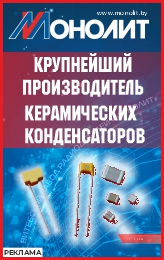DOI: 10.22184/1992-7296.FRos.2019.13.7.642.646
Through the use of lidar, various details of atmospheric composition can be discerned. The National Center for Atmospheric Research developed an eye-safe lidar implementation for atmospheric investigation. Using stimulated Raman scattering (a third-order nonlinear process) the instrument output is eye-safe at approximately 1.5 μm. The instrument has a range of up to 9 km. It also has performance and durability advantages over many previously reported eye-safe lidar configurations. Eye-safe operation is necessary to broaden the available locations for measurements, including more populated areas and near airports.
Through the use of lidar, various details of atmospheric composition can be discerned. The National Center for Atmospheric Research developed an eye-safe lidar implementation for atmospheric investigation. Using stimulated Raman scattering (a third-order nonlinear process) the instrument output is eye-safe at approximately 1.5 μm. The instrument has a range of up to 9 km. It also has performance and durability advantages over many previously reported eye-safe lidar configurations. Eye-safe operation is necessary to broaden the available locations for measurements, including more populated areas and near airports.
Теги: аэрозоль безопасный для глаз драйвер лазера задающий лазер инжекция излучения исследование атмосферы комбинационное рассеяние контроллер температуры крс лидар рэффект рамана стокс упругое комбинационное рассеяние
DOI: 10.22184/1992-7296.FRos.2019.13.7.642.646
Through the use of lidar, various details of atmospheric composition can be discerned. The National Center for Atmospheric Research developed an eye-safe lidar implementation for atmospheric investigation. Using stimulated Raman scattering (a third-order nonlinear process) the instrument output is eye-safe at approximately 1.5 μm. The instrument has a range of up to 9 km. It also has performance and durability advantages over many previously reported eye-safe lidar configurations. Eye-safe operation is necessary to broaden the available locations for measurements, including more populated areas and near airports.
Through the use of lidar, various details of atmospheric composition can be discerned. The National Center for Atmospheric Research developed an eye-safe lidar implementation for atmospheric investigation. Using stimulated Raman scattering (a third-order nonlinear process) the instrument output is eye-safe at approximately 1.5 μm. The instrument has a range of up to 9 km. It also has performance and durability advantages over many previously reported eye-safe lidar configurations. Eye-safe operation is necessary to broaden the available locations for measurements, including more populated areas and near airports.
Readers feedback

 rus
rus TS_pub
TS_pub technospheramag
technospheramag technospheramag
technospheramag ТЕХНОСФЕРА_РИЦ
ТЕХНОСФЕРА_РИЦ


